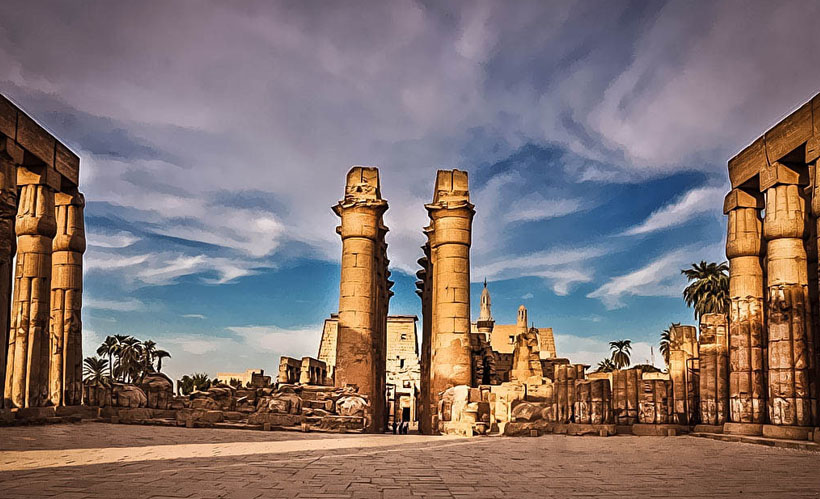Cultural, historical, adventure, and custom customized trips are just a few of the tours that Deluxe trips offer in Egypt and Jordan.

Welcome to Luxor City, a pristine outdoor museum in southern Egypt. The abode of the ancient city of Thebes, Luxor is among the world's greatest archaeological treasures. With its gigantic temples and royal tombs, Luxor offers an unforgettable blend of history, religiosity, and nature.
In this blog, we will walk you through the things to see in Luxor, especially the world-renowned Valley of the Kings and Karnak Temple, and why Luxor is a traveler's dream destination to indulge in the splendor of ancient Egypt.
Luxor is not a city, it's an experience—traveling back over 3,000 years. Ancient capital of the New Kingdom, Thebes was the political, religious, and cultural heart of Egypt. Luxor's significance is that it was where pharaohs were buried and temples in the gods' honor were constructed.
If one is interested in Egyptology or if one is simply fascinated by awe-inspiring architecture, one has to go to Luxor.
No trip to Luxor would be complete without a visit to the Valley of the Kings. Concealed on the west bank of the Nile, this historic burial site was employed for virtually 500 years to bury pharaohs and influential nobles. Over 60 tombs have been unearthed here, one being that of Tutankhamun, with his golden treasures and undisturbed resting place.
The tombs are richly decorated with hieroglyphics and Book of the Dead scenes illustrating the pharaohs' journey into the afterlife.
Must-see:
– Tomb of Tutankhamun
– Seti I's tomb (one of the longest and most intricate)
– Tomb of Ramses V and VI with ceiling painting in bright colors
The Karnak Temple Complex is the largest religious structure ever built. Spanning over 100 hectares, Karnak served as the primary place of worship for the god Amun-Ra. Walking through the massive Hypostyle Hall, filled with 134 towering columns, you’ll feel the grandeur of ancient Egyptian devotion and architectural innovation.
The Avenue of Sphinxes, recently reopened, once connected Karnak to Luxor Temple and creates a breathtaking route for tourists to imagine the ancient religious processions.
Karnak Highlights:
Hypostyle Hall
Sacred Lake
Obelisks of Hatshepsut and Thutmose I
Learn more: Secrets of Karnak Temple
More to discover: Luxor Day Tours from Cairo
Related read: Secrets of Karnak Temple
Explore more: Luxor Day Tours from Cairo
Built by Amenhotep III and completed by Ramses II, Luxor Temple remains in good condition and is located in the center. It comes alive at night when the lighting highlights beautiful carvings and statues. Unlike Karnak, which was built for gods, Luxor Temple was built to commemorate the rebirth of kingship.
Don't forget to see the seated colossi of Ramses II, the ancient Roman wall paintings, and the blend of Pharaonic, Greco-Roman, and Islamic influences.
These two massive stone statues of Pharaoh Amenhotep III have stood guard over the entrance to his mortuary temple for over 3,400 years. While the temple itself is no longer present, the Colossi of Memnon remain symbolic significant old Thebes and a popular photo stop.
Carved out of Deir el-Bahari rocks, the Mortuary Temple of Hatshepsut is a stunning temple built for Egypt's greatest female leader. With three tiered floors and precise symmetry, this site is both a pleasing to the eye destination and replete with political as well as religious symbolism.
Take a sunset felucca cruise along the Nile
Explore Luxor Museum to view temple and tomb artifacts
Search local souks for local crafts and spices
Visit Temple of Medinet Habu, which is less touristy but no less beautiful
When Is the Best Time to Visit Luxor?
The best time to visit Luxor is between October and April when the weather is warmer and perfect for spending a long day sightseeing. Summer temperatures reach as high as 40°C (104°F), so not so good for outdoor activities.
From the sky: Daily flights from Cairo, Sharm El Sheikh, and Hurghada
By train: Overnight sleeper trains from Cairo
By road: Private car or bus from adjacent cities
Luxor is a city where history breathes through every stone. Whether you’re tracing the footsteps of Ramses the Great at Karnak Temple or exploring the timeless tombs of the Valley of the Kings, Luxor promises a journey that is both magical and enlightening.
So if you’re planning your Egypt day tours or looking for a deeper exploration, Luxor should top your list.
Discover now our answers to the most common questions that may come to your mind about tourism and trips to Egypt
Cultural, historical, adventure, and custom customized trips are just a few of the tours that Deluxe trips offer in Egypt and Jordan.
The Dead Sea, Petra in Jordan, the Pyramids of Giza, Luxor's historic temples, and many other famous sites can be expected to be explored with Deluxe Tours.
offer a hassle-free holiday, Deluxe Tours' packages generally include lodging, transport, meals, guided tours with experienced local experts, and entry fees to attractions.
Spring (March to May) and fall (September to November) offer the finest weather for sightseeing and outdoor activities, making those months the best times to visit Egypt and Jordan.
These two countries are close by, only a 1.5-hour flight apart, and when combined, offer a variety of distinctive experiences. We advise you to spend at least 12 days visiting both countries for a truly unforgettable experience
Combining the eclipse viewing with visits to historic sites like the Pyramids of Giza, the Valley of the Kings, and a Nile River cruise are highly recommended.
